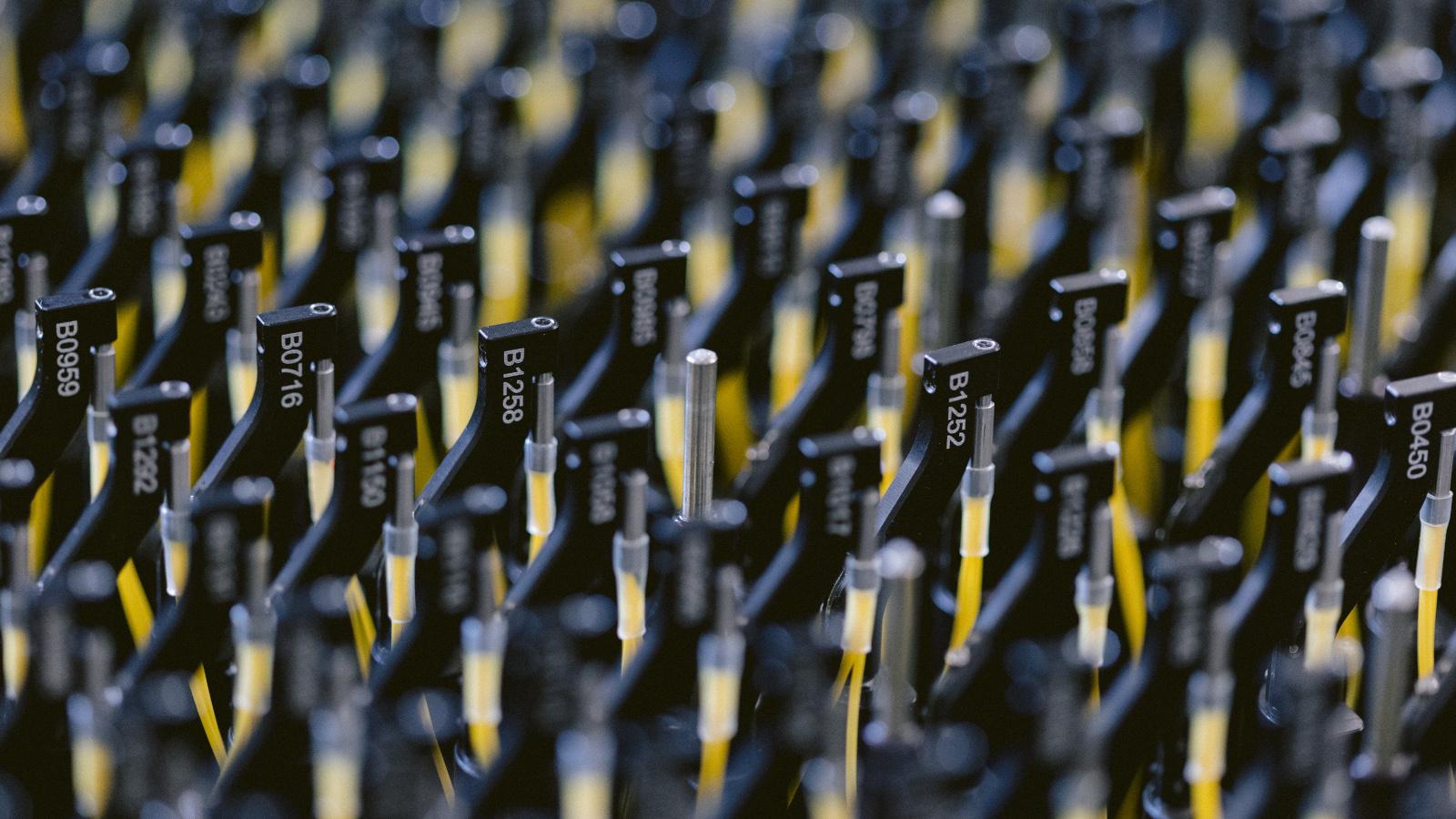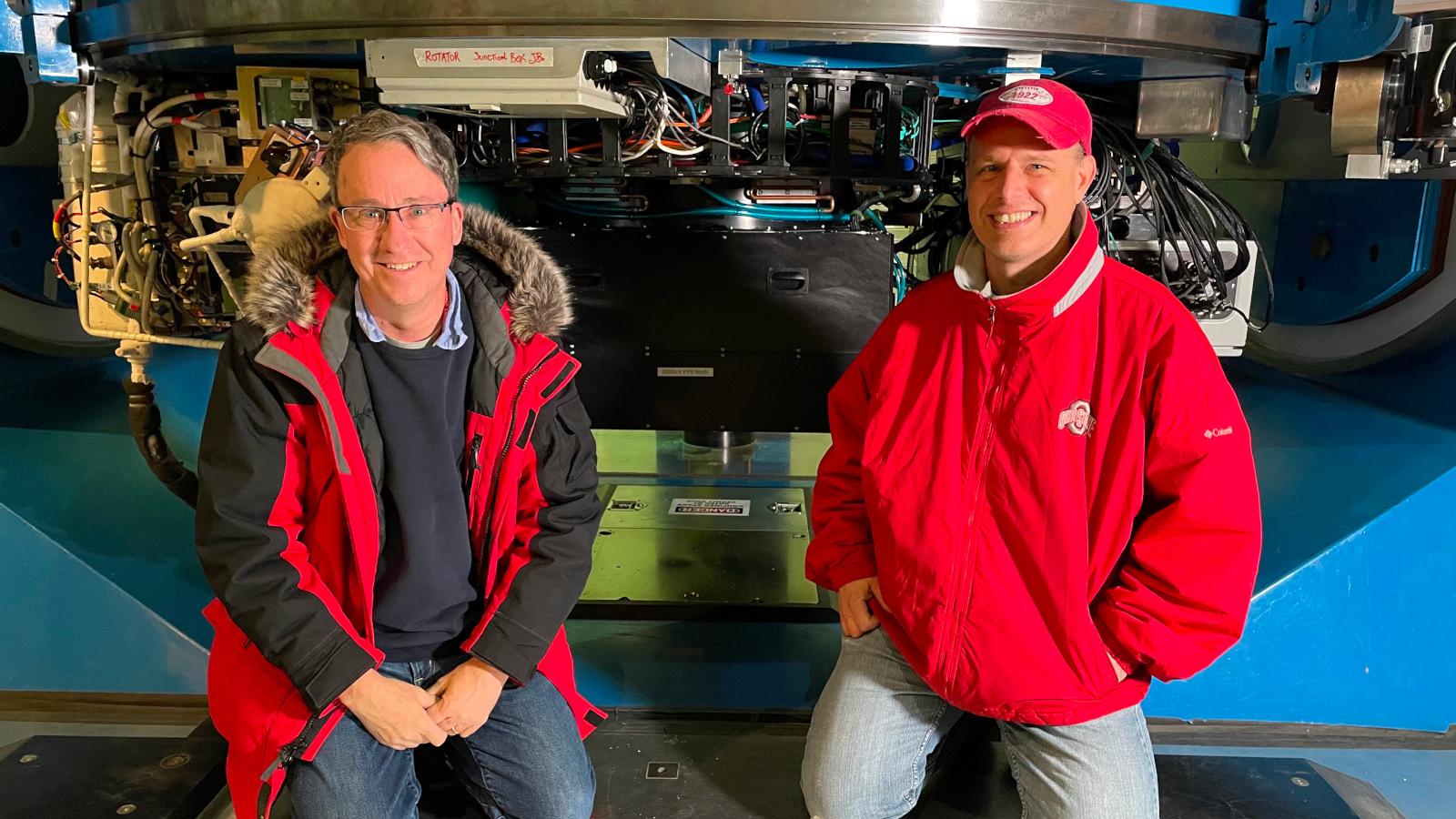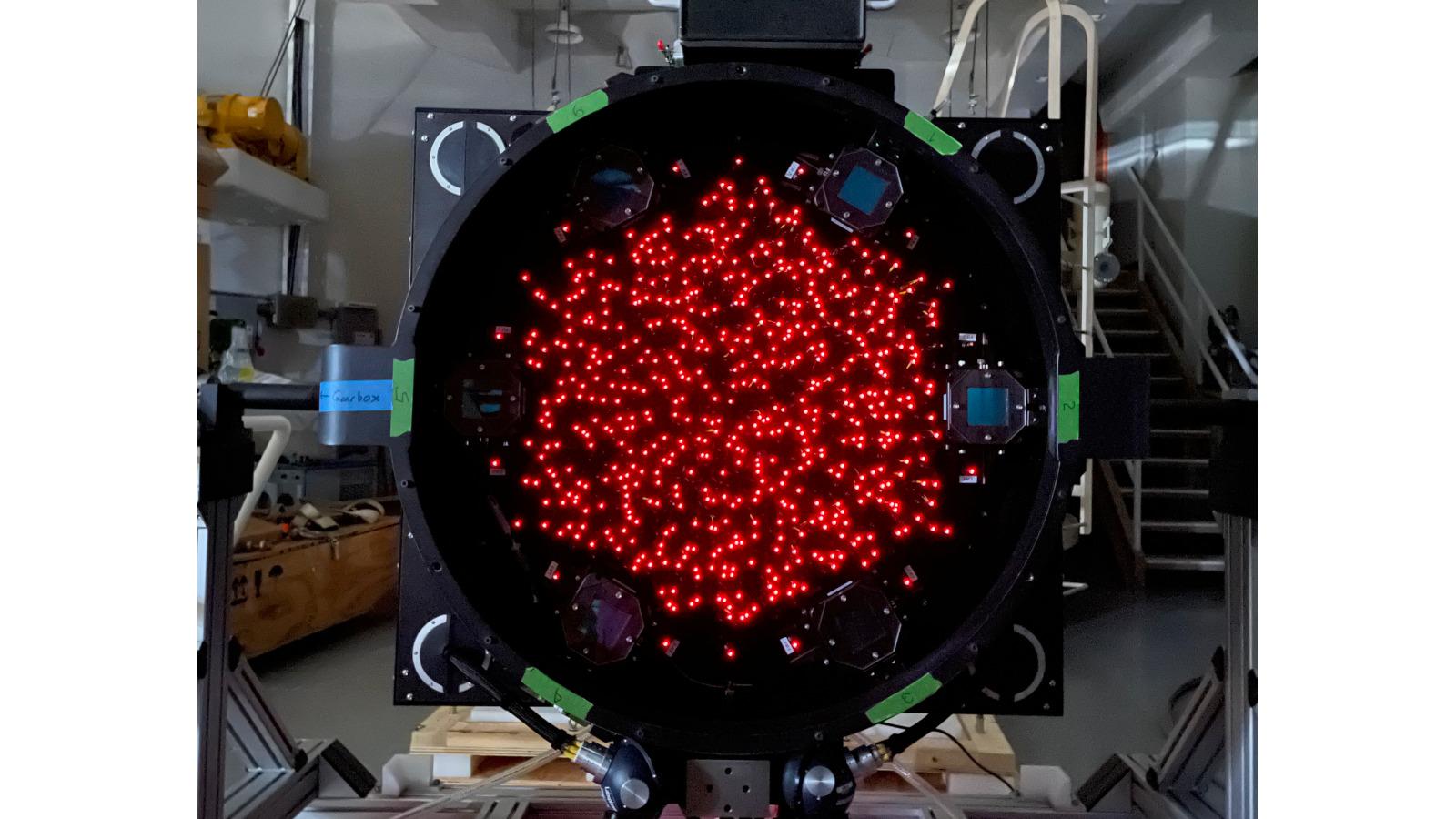SDSS Robotic Focal Plane Systems (FPS)
The Focal Plane Systems (FPS) were designed to replace the traditional SDSS fiber plug-plate systems at the Sloan and du Pont telescopes for the 5th generation Sloan Digital Sky Survey (SDSS-V). The first FPS was deployed on the 2.4m Sloan Telescope at Apache Point Observatory in November 2021, and the second was deployed on the 2.4m Du Pont Telescope at Las Campanas Observatory in August 2022.
Each FPS deploys 500 zonal fiber positioners that allow us to reconfigure the fibers onto a new target field within 2-3 minutes of acquisition. Each positioner carries three fibers: two science fibers that feed the BOSS and APOGEE spectrographs and a third back-illuminated metrology fiber is used in conjunction with a telescope-mounted Fiber Viewing Camera (FVC) to measure the absolute positions of the fiber heads. The 300 APOGEE fibers are distributed among the 500 positioners to maximize common field coverage. A set of fiber-illuminated fiducials distributed in and around the positioner array establish a fixed reference frame for the FVC system. Finally, six CCD cameras mounted around the periphery of the focal plane provide acquisition, guiding, and focus monitoring functions. The FPS is the key enabling technology of the SDSS-V Milky Way and Black Hole Mapper surveys.
Instrument Specification
- Project type: Facility robotic optical fiber positioner system
- Wavelength: 350-1600nm (visible and near-IR)
- Field of View: 2 degrees
- Primary science: galactic archaeology, active galactic nuclei, white dwarfs, stellar abundances
- Telescopes: 2.4m Sloan Telescope, APO (New Mexico), and 2.4m Du Pont Telescope, Las Campanas (Chile)
- Years active: 2021 - present
- Reference: Pogge et al. 2020, SPIE, 11447, 81P
Instrument Facts
- The FPS units replaced the iconic SDSS hand-plugged drilled fiber plates
- The fiber robots were built by Swiss precision micro-machine company MPS Faulhaber
- The FPS allows simultaneous operation of the BOSS and APOGEE spectrographs
- The fiber positioner robot mounting plates are machined into precision curved surfaces to <15 micron rms
- Fibers can be reconfigured for a new field within 3 minutes.
- The major design and initial assembly phases were carried out remotely during the COVID-19 pandemic, and final lab integration and testing was done fully masked.
Instrument Team
Richard Pogge (PI)
Mark Derwent (Lead Mechanical Engineer)
Chris Brandon (System Engineer and Project Manager)
Colby Jurgenson (Optical Designer)
Tom O'Brien (Senior Mechanical Engineer)
Daniel Pappalardo (Electrical Engineer)
Michael Engelman (Mechanical Engineer)
Jerry Mason (Software Systems Developers/Engineer)
Jon Shover (Instrument Maker)
Julia Brady (Technician and fiber-routing goddess)
Jacob McCloskey (Technician)
Jean-Paul Knieb (EPFL - positioner lead)
Mohamed Bouri (EPFL - positioner lead)
Ricardo Araujo (EPFL - positioner team)
Luzius Kronig (EPFL - positioner software)
Loic Grossen (EPFL - positioners)
Sarah Tuttle (UWash - optical fibers)
Emily Farr (UWash - optical fibers)
Jose Sanchez-Gallego (UWash - software lead)
Conor Sayres (UWash - fiber configuration software)
Muwen Shi (APO - robot installation expert)
Frances Cope (APO - robot installation expert)







